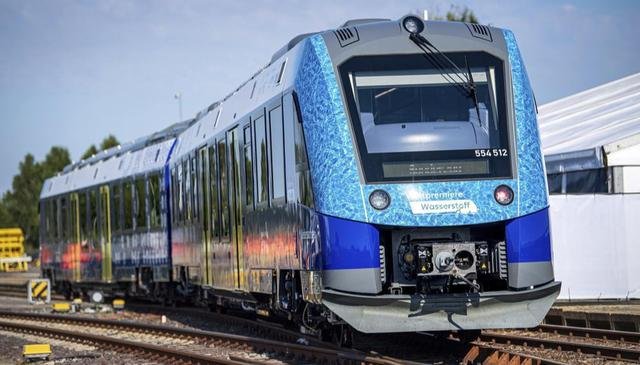Germany on Wednesday introduced the very first fleet of hydrogen-powered passenger trains in the world by replacing nearly 15 diesel trains. Read further.
Germany unveils world’s 1st hydrogen-powered passenger train in a bid to save environment

Germany on Wednesday introduced the very first fleet of hydrogen-powered passenger trains in the world by replacing nearly 15 diesel trains that had previously run on non-electrified railway tracks in the state of Lower Saxony. According to the Associated Press report, the fourteen trains utilise hydrogen fuel cells to produce electricity which further powers the engines. Moreover, the German government has supported the expansion of hydrogen usage as a clean substitute for fossil fuels.
Furthermore, Stephan Weil, the state governor, stated that the 93-million-euro ($92 million) initiative is an “excellent example” of Lower Saxony’s attempts to make its economy more environment friendly.
In addition to this, the 93-million-euro agreement has been struck by state-owned Landesnahverkehrsgesellschaft Niedersachsen (LVNG), which owns the railway, and Alstom, the French company that makes Coradia iLint trains. The project also includes the gas and engineering firm Linde as well as the Elbe-Weser Railways and Transport Company (EVB), CNN reported.
The regional rail firm LNVG runs the Alstom-built passenger trains on lines connecting the northern towns of Cuxhaven, Bremerhaven, Bremervoerde, as well as Buxtehude, Associated Press reported.
World’s first Hydrogen-powered train in Germany
The Coradia iLint trains, according to Alstom, have a maximum speed of 140 kph and a range of up to 1,000 kilometres. It is also reported that the trains would save nearly 1.6 million litres (or over 422,000 gallons) of diesel fuel annually by using hydrogen-generated renewable energy. One kilogram of hydrogen fuel has the same energy content as around 4.5 kilogram of diesel, CNN reported.
It is worth mentioning that only steam as well as condensed water will come out from the exhaust of these quiet, emissions-free trains. Further, they can operate on the network for a whole day on a single hydrogen tank due to their 1,000 km range. As per the media report, on the path, a hydrogen filling station has already been set up. There are two fuel pumps, six hydrogen compressors, and 64 high-pressure storage tanks at the Linde-operated filling station.
According to Alstom CEO Henri Poupart-Lafarge, “emission-free mobility is one of the most important goals for ensuring a sustainable future.”
Besides this, the agreement has been in the making for ten years. As per a press release, LVNG has been exploring diesel substitutes since 2012, while, Alstom launched two-year testing of the trains in the year 2018. Currently, there are about 4,000 diesel trains operating on the country’s non-electric routes. Additionally, Austria, Poland, Sweden, and the Netherlands have all conducted tests on the Coradia iLint.
Currently, hydrogen is created as a byproduct of chemical processes; however, within three years, German specialty gas manufacturer Linde hopes to make hydrogen locally using exclusively renewable energy, Associated Press reported.



